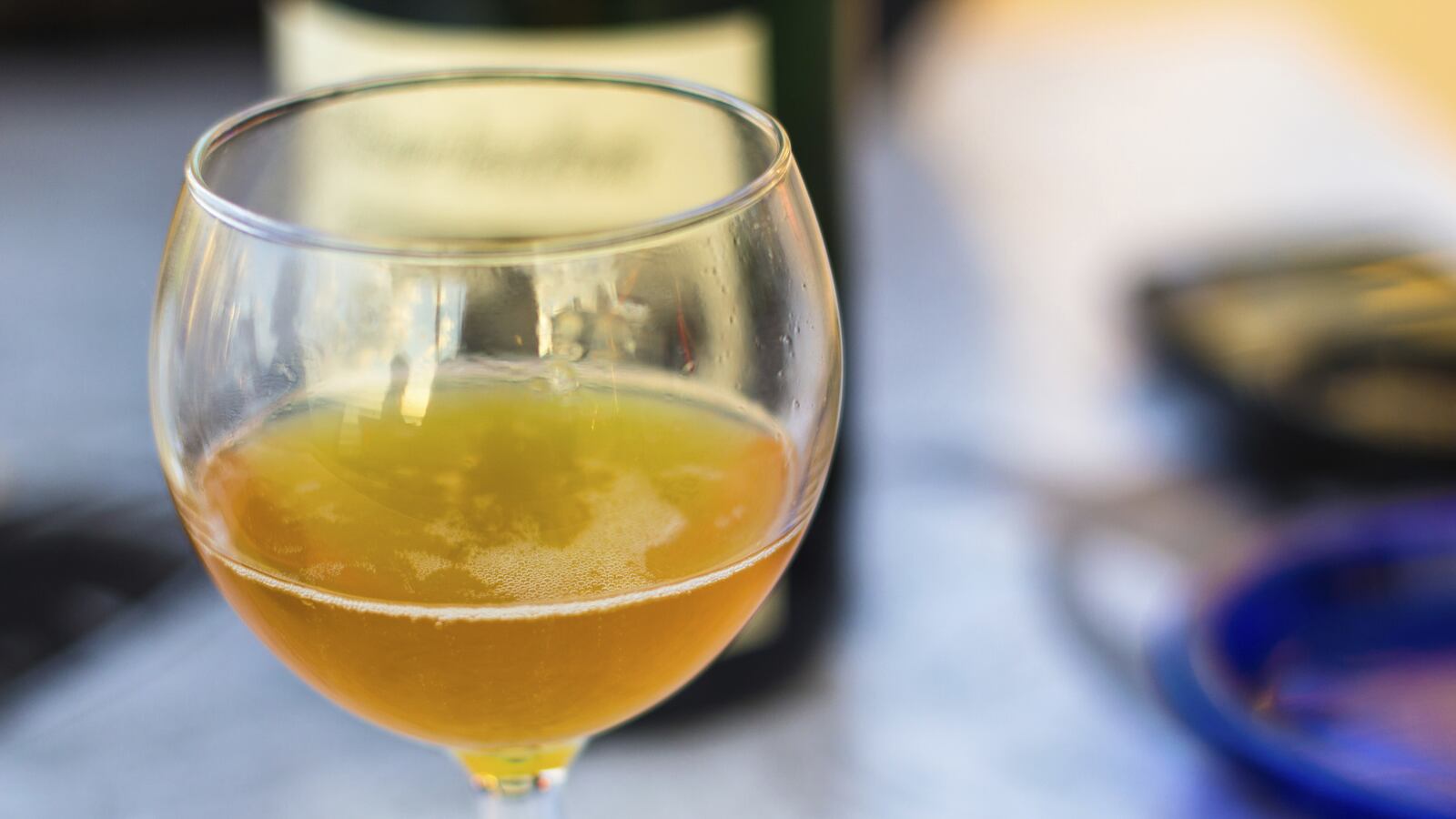I visited Normandy for the first time a few weeks ago for the sole purpose of tasting cider at one specific estate. Eric Bordelet, a former sommelier at Alain Passard’s three-Michelin-starred Parisian restaurant, L’Arpege, left city life over two decades ago to return to his family’s hometown of Charchigné, 145 miles west of Paris. Encouraged by friends in the wine industry and driven by a desire to breathe pedigree and excellence into the more rustic cider industry, Bordelet began to make ciders that behaved, in elegance and in style, like fine wine.

Cider has a long and storied history that can be tasted in the variety of options found throughout the world. At the most basic level, most ciders are produced using a blend of sweet, sour, and bitter apple and pear varieties. The proportional breakdown has a lot to do with either the kinds of fruit native to the particular location where the cider is being made, or those that have ended up in the area as a result of trade routes and historical conquests. The Romans helped spread orchard fruit, as well as vines, while William the Conqueror’s Norman conquest in 1066 and Henry the VIII’s 16th-century reign resulted in a vast spread of specific varieties to England and throughout Europe.
Despite an impressively long history, cider has maintained a relatively humble identity. Most ciders are either rustic in style, or they’re made commercially resulting in simple and diluted flavors.

Cideries like Bordelet’s are the exception. Charchigné is laden with charm. Arriving at Bordelet's ciderie, we parked along a stone wall bedecked with vibrant, voluptuous yellow and red roses. Next to his home stands an abandoned castle, part of which burned down in 1922, that is undergoing construction. Bordelet is converting it in into a cider cellar.
Geology is important to making great wine, and it is particularly respected by French vintners. Terroir is a French term, after all, and Burgundy, where Bordelet studied winemaking before returning to Normandy, exists as the benchmark study of the ways in which location impacts taste.
Near Charchigné, the primary soils are granite, slate, and a mix of the two that formed millions of years ago when the hot granite pushed through the layer of slate. Bordelet recognizes which trees perform best in each, and he plants and farms his orchards accordingly. His top bottling, Poire Granit, is made from—and named after—three-hundred-year-old pear trees whose roots have broken through the slate earth and into layers of granite far below.
While cider has long been a staple of the region (Normady is also home to Calvados, the other famous apple-based brew), Bordelet stands out for his devotion to producing ciders of purity and quality. He has farmed his orchards biodynamically since his first vintage, 1992, and he eschews chemicals that would lead to higher yields in order to respect the plant cycle, a decision quite rare among commercial cider producers. He ferments his ciders using indigenous yeasts, and his ciders maintain a purity and freshness unique in the cider category.
Bordelet is a private man. During my visit to the orchards and ciderie, Bordelet invited me to take as many photographs as I liked outside, but said that the winer was off-limits. I asked to take just one photo inside the ciderie – of a four-legged tank painted with a wooly-mammoth with a caption that reads “soyons realistes et exigeons l'impossible,” “let’s be realists and demand the impossible.” Fittingly, he agreed.
Only one other producer in the world, to my knowledge, is making similarly nuanced ciders with similar conviction. Jacques Perritaz, a biologist-turned-cider producer, is crafting gorgeous examples at Ciderie du Vulcain. Located in Fribourg, Switzerland, Perritaz uses untreated, foraged fruit grown on high trees around his home in the Alpine region. I first tried these ciders in Burgundy, before they were imported to the United States.
To gain insight as to why these ciders, like Bordelet’s eclipse others around the world in their purity and depth, I called Paul Wasserman of Le Serbet, the company responsible for bringing Ciderie du Vulcain to the United States.
"A, there’s the continental/mountain terroir. It’s mineral, with sharp acidity. I find this stunning mountain stream, fresh air thing in a lot of Alpine wine,” Paul explains. “B, there are the fruit varieties. [Perritaz’s] don’t have the same polyphenols as the tart Normandy varieties that evolve quickly towards the more barnyard aromas and flavors. There is also more nitrogen in his varieties, and this contributes to a quick restart of fermentation after each filtration. C, lastly, I just think [Perritaz] has a natural taste for purity, delicacy, and ethereal balance. Basically that’s his palate. All the wines he likes are like that. “
Paul mentioned that Bordelet and Perritaz have become close friends, and that Bordelet has become a mentor to his Swiss counterpart. This explains the similarity in their crystalline style.
While these two producers are making ciders as easy to enjoy as they are to pontificate on, what remains most impressive are their respective motivations, their quest for purity and perfection, and their willingness to innovate and experiment couched within a respect for tradition. Quietly, these two men are revolutionizing an industry. As Bordelet's blending tank reminds those who pass by, "let’s be realists and demand the impossible.”






